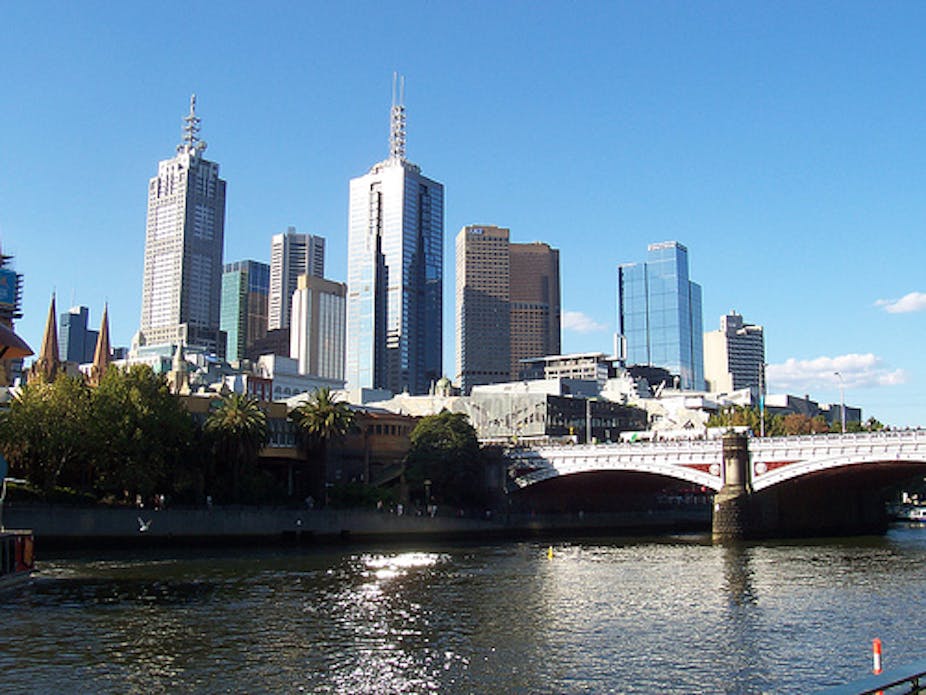City leaders and media across the world have been celebrating or commiserating over this week’s announcement of the annual “world’s most liveable city” rankings.
Indeed, a resplendent Melbourne Lord Mayor Robert Doyle has waxed lyrical on just how important, and enjoyable, it is to be a part of the world’s most liveable city.
But as Vancouver’s leaders and many of its citizens begrudgingly hand over bragging rights to their Melbourne counterparts, the rest of us should stop and ask what exactly does a “liveability” ranking mean – and what is being overlooked amidst all of the hoohah.
The Economist Intelligence Unit liveability survey is designed to test whether the Human Resource Departments of major global corporations need to “assign a hardship allowance as part of expatriate relocation packages”.
The similar Mercer Quality of Living Index aims to “help major companies place employees on international assignments”.
Both do an admirable job in these respects. Indeed, subscriptions to the intelligence that the EIU and consultancies like Mercer provide are those organisations’ bread and butter.
However, more recently politicians are relying on the rankings to benchmark cities against each other and possibly, to steer policy. The EIU recognizes that liveability (as they define it) is “increasingly used by city councils, organisations or corporate entities looking to test their locations against others to see general areas where liveability can differ”.
This is a problem, as one does not have to stretch the imagination too far to recognise that life in the world’s most liveable city is not all that it is cracked up to be.
For the un- and under-employed, many renters, pensioners, new immigrants, the disabled and relatively well-educated “creatives” living in the precarious “knowledge economy” on a contract-to-contract basis, such proclamations ring hollow. What the rankings offer is essentially a technical fix for an intuitive and existential set of questions that require real community debate.
Categorising the different dimensions of liveability into a ranking system begs the question of what should a city focus on to ensure that the quality of life which its residents share is maintained and improved.
In short, the liveability rankings are an exercise in technocratic over-reach, glossing over the complicated, shared experiences of what they purport to monitor: “liveability” and, increasingly, “sustainability”.
The EIU and Mercer indices say little about issues that may sit beyond their scope, such as economic distribution, social inclusion, the ecological footprint, working conditions, planning for the future or a range of other legitimate criteria.
The indices create conditions for a self-fulfilling prophecy of sorts, one that sets its own standards of success while casting failure simply as failing to live up to those measures.
The indices do not necessarily indicate whether a highly ranked liveable or sustainable city is providing anything beyond what lay within the unilaterally determined list of indicators – a list generally determined by a bunch of hot-shot City of London consultants.
But, as the index-ranking roadshow rolls on, the rankings are becoming politically important while public debate over what citizens feel should constitute measures of “liveability” is missing.
The growing momentum toward emphasising liveability among cities such as Melbourne and Vancouver is laudable, and the embrace by political leaders of the rankings contributes to this emphasis. Whereas in times past the focus was on “hard” issues such as social welfare, transport and building codes, contemporary urban policy emphasises a richer palette of issues: quality of life, cultural diversity, social inclusion, environmental sustainability, public participation.
But politicians and residents in places that are leaders in liveability (like Melbourne and Vancouver) could reach higher.
They could assert that fulfilling the demands of the rankings is only a small part of what a city should be striving for.
While ranking systems such as the EIU or Mercer’s add clarity to the job of politicians — raise and maintain the position of your city according to the rankings — they also place a responsibility upon the people lucky enough to live in these “liveable” cities.
We need to demand that our leaders move beyond rankings and actually consult us on what we think liveability means. That’s what should be driving planning and policy, not a listing aimed at the world’s HR managers.

